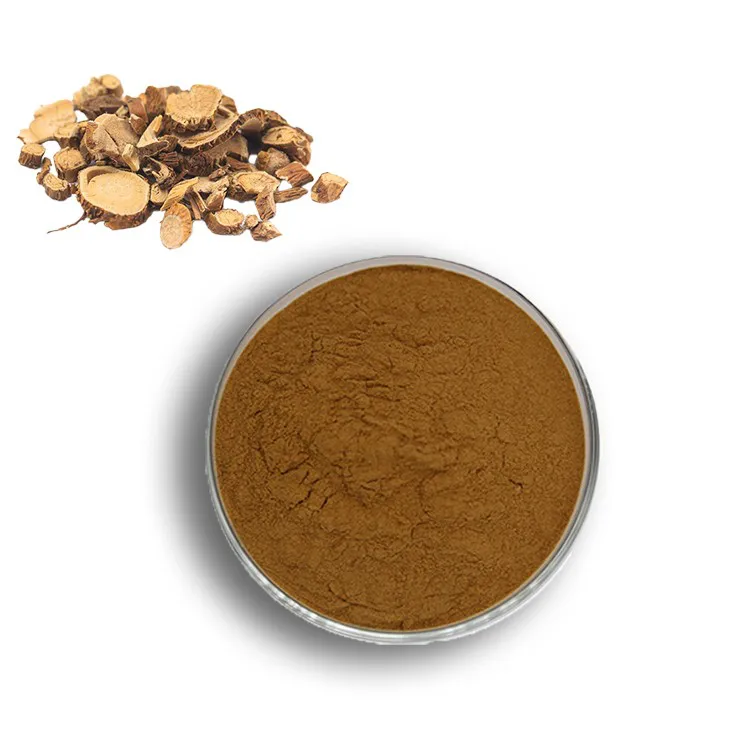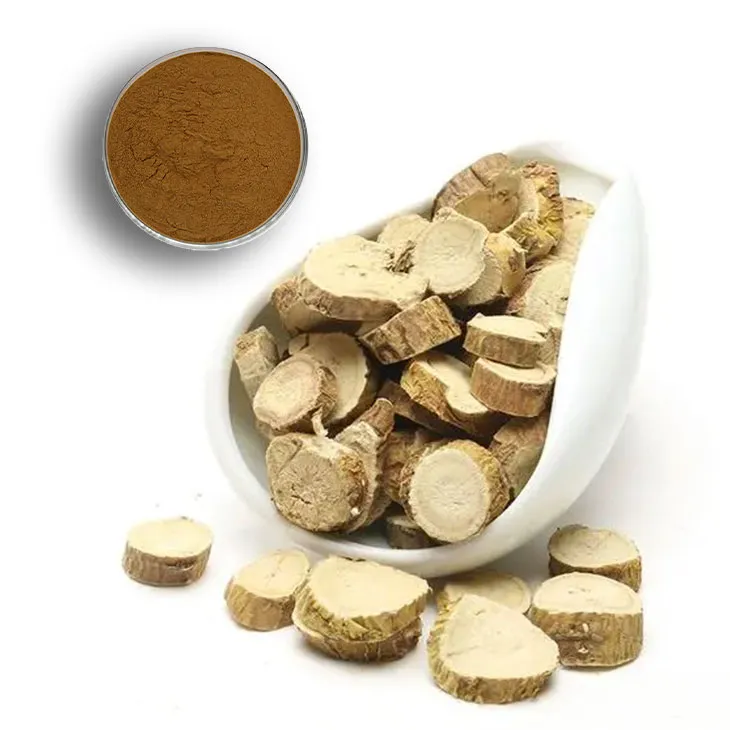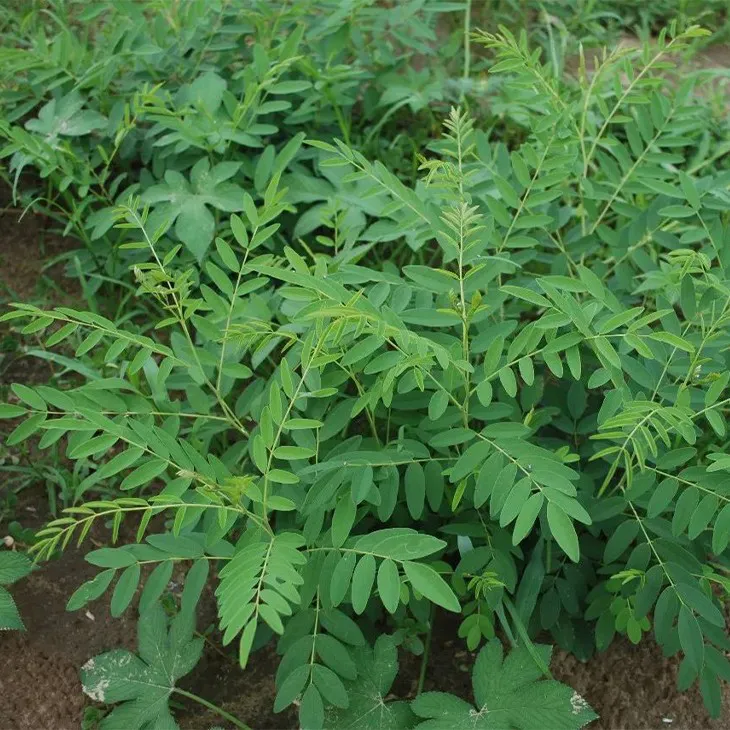- 0086-571-85302990
- sales@greenskybio.com
Sophora flavescens Root Extract: China vs. the United States
2024-11-27

1. Introduction
Sophora flavescens root, known as "Kushen" in Chinese, has been an important part of traditional Chinese medicine for centuries. The extract from Sophora flavescens root contains various bioactive components, which have shown potential in treating a wide range of diseases. China and the United States, two major players in the global health and research fields, have different approaches towards this valuable plant extract.

2. China's Perspective on Sophora Flavescens Root Extract
2.1. Historical and Cultural Significance
Traditional Chinese Medicine Heritage: In China, Sophora flavescens root has a long - standing history in traditional Chinese medicine. It is mentioned in ancient medical texts such as "Shennong Bencaojing." The understanding of this herb has been passed down through generations of Chinese medical practitioners.
2.2. Collection and Processing
- Collection: There are strict rules regarding the collection of Sophora flavescens root. Traditionally, it is collected at specific times of the year to ensure the optimal content of active ingredients. For example, it is often collected in autumn when the plant has fully matured. - Processing: Chinese medicine has a sophisticated system of processing Sophora flavescens root. Different processing methods, such as drying, roasting, and soaking in certain liquids, are used to enhance its medicinal properties or reduce toxicity. These processes are based on the principles of traditional Chinese medicine theory.
2.3. Clinical Application in Traditional Chinese Medicine
- Disease Treatment: In traditional Chinese medicine, Sophora Flavescens Root Extract is used to treat various diseases. For instance, it is often used in formulas for treating skin diseases due to its anti - inflammatory and anti - itch properties. It is also used for treating some internal heat - related syndromes, such as damp - heat in the intestines. - Syndrome Differentiation: Chinese medicine practitioners use the concept of syndrome differentiation to determine the appropriate use of Sophora Flavescens Root Extract. They consider factors such as the patient's overall condition, the nature of the disease, and the balance of yin and yang in the body.

3. The United States' Approach to Sophora flavescens Root Extract
3.1. Research - Driven Investigation
Modern Scientific Research: In the United States, the focus on Sophora flavescens root extract is mainly driven by modern scientific research. Scientists use advanced techniques such as high - performance liquid chromatography (HPLC) and mass spectrometry (MS) to analyze the chemical composition of the extract.
3.2. Analysis of Chemical Composition
- Identification of Compounds: Through scientific research, a number of bioactive compounds have been identified in Sophora flavescens root extract. These include alkaloids, flavonoids, and saponins. Each of these compounds may have different biological activities, such as antioxidant, antibacterial, or anticancer properties. - Quantitative Analysis: Scientists in the United States also conduct quantitative analysis of these compounds to determine their concentration in the extract. This information is crucial for understanding the potential efficacy and safety of the extract.
3.3. Biological Activity Studies
- In - vitro Studies: Many in - vitro studies have been carried out in the United States to explore the biological activity of Sophora flavescens root extract. For example, cell culture experiments are used to study its effects on cancer cells or immune cells. These studies help to screen for potential therapeutic applications. - In - vivo Studies: In - vivo studies, usually on animal models, are also an important part of the research. By observing the effects of the extract on animals, researchers can get a better understanding of its pharmacokinetics, toxicity, and potential therapeutic effects in a living organism.

4. Differences in Utilization Patterns
4.1. Product Forms
- China: In China, Sophora flavescens root extract is often used in the form of traditional Chinese medicine preparations. These include decoctions, pills, powders, and ointments. For example, some traditional Chinese medicine ointments containing Sophora flavescens root extract are widely used for treating skin diseases. - United States: In the United States, the extract may be more likely to be developed into dietary supplements or potential pharmaceutical products in a more purified and standardized form. For example, some companies may produce capsules containing a standardized amount of Sophora flavescens root extract for consumers interested in natural health products.
4.2. Regulatory Frameworks
- China: In China, the use of Sophora flavescens root extract in traditional Chinese medicine is regulated by the relevant traditional Chinese medicine regulatory authorities. There are specific standards for the quality control of traditional Chinese medicine products containing this extract, including requirements for raw material quality, processing methods, and product safety. - United States: In the United States, the regulation of products containing Sophora flavescens root extract depends on their classification. Dietary supplements are regulated under the Dietary Supplement Health and Education Act (DSHEA), which has different requirements compared to pharmaceutical products. Pharmaceutical products need to go through more rigorous pre - market approval processes.
5. Development Trends
5.1. China's Development Trends
- Modernization of Traditional Chinese Medicine: China is currently promoting the modernization of traditional Chinese medicine. For Sophora flavescens root extract, this means combining traditional knowledge with modern scientific research methods. For example, more in - depth studies on the pharmacology and quality control of the extract are being carried out using modern techniques. - Internationalization of Traditional Chinese Medicine: China is also striving to internationalize traditional Chinese medicine. Sophora flavescens root extract, as one of the representative herbs, may have more opportunities to be introduced to the international market. However, challenges such as meeting international regulatory requirements and cultural differences need to be addressed.
5.2. The United States' Development Trends
- Natural Product Research: The United States has a strong interest in natural product research. Sophora flavescens root extract, with its rich chemical composition and potential biological activities, is likely to continue to be a focus of research. Future research may focus on further exploring its therapeutic potential for various diseases, especially chronic diseases. - Collaboration with China: Given China's long - term experience with Sophora flavescens root in traditional Chinese medicine, there may be increasing collaboration between the United States and China in the research and development of this extract. This collaboration could bring together the advantages of both countries, such as China's traditional knowledge and the United States' advanced research techniques.
6. Conclusion
In conclusion, the comparison between China and the United States regarding Sophora flavescens root extract reveals distinct characteristics in various aspects. China's traditional approach based on a long - standing medical heritage and the United States' scientific - research - driven method both contribute to the understanding and utilization of this valuable plant extract. As the global health awareness increases and the demand for natural products grows, further exploration and cooperation between the two countries in this area may bring more benefits in terms of health promotion, disease treatment, and the development of the pharmaceutical and health - care industries.
FAQ:
1. What are the main differences in the understanding of Sophora flavescens root extract between China and the United States?
In China, as part of traditional Chinese medicine, there is a comprehensive understanding based on its long - standing traditional medical system. This includes knowledge about its collection, processing, and clinical application within the framework of traditional Chinese medicine theories. In the United States, the understanding mainly comes from a scientific research - driven perspective. The United States focuses on using modern scientific research techniques to analyze its chemical composition and biological activity.
2. How does China incorporate Sophora flavescens root extract into its medical system?
China has a complete set of traditional medical theories. Sophora flavescens root extract is integrated into the traditional Chinese medicine system. For example, it is used in prescriptions according to the principles of syndrome differentiation and treatment in traditional Chinese medicine. Chinese medicine practitioners consider various factors such as the patient's symptoms, constitution, and the nature of the disease when using it clinically.
3. What scientific research methods does the United States use for Sophora flavescens root extract?
The United States typically uses advanced modern scientific research techniques. This may include methods such as chromatography for separating and identifying chemical components, and in - vitro and in - vivo experiments to study its biological activity. For instance, cell - based assays may be used to determine its effects on specific cell types, and animal models may be employed to study its potential therapeutic effects in living organisms.
4. Are there any common research interests in Sophora flavescens root extract between China and the United States?
Yes, both countries recognize the potential value of Sophora flavescens root extract. They may both be interested in its potential medicinal properties, such as anti - inflammatory, antibacterial, or antioxidant effects. However, due to differences in their approaches, the way they conduct research and the focus of their investigations may vary.
5. How do cultural backgrounds influence the utilization of Sophora flavescens root extract in China and the United States?
In China, the cultural background of traditional Chinese medicine, which has a history of thousands of years, deeply influences the use of Sophora flavescens root extract. It is regarded as an important part of natural medicine with its own unique theoretical system. In the United States, the Western scientific and medical culture emphasizes evidence - based medicine and modern scientific research methods. This leads to a different way of approaching and using the extract compared to China.
Related literature
- Sophora flavescens: Traditional Uses and Modern Research in China"
- "Analyzing the Chemical Composition of Sophora flavescens Root Extract in the United States: A Review"
- "Comparative Study on the Medicinal Value of Sophora flavescens Root Extract in Different Medical Systems"
- ▶ Hesperidin
- ▶ Citrus Bioflavonoids
- ▶ Plant Extract
- ▶ lycopene
- ▶ Diosmin
- ▶ Grape seed extract
- ▶ Sea buckthorn Juice Powder
- ▶ Fruit Juice Powder
- ▶ Hops Extract
- ▶ Artichoke Extract
- ▶ Mushroom extract
- ▶ Astaxanthin
- ▶ Green Tea Extract
- ▶ Curcumin
- ▶ Horse Chestnut Extract
- ▶ Other Product
- ▶ Boswellia Serrata Extract
- ▶ Resveratrol
- ▶ Marigold Extract
- ▶ Grape Leaf Extract
- ▶ New Product
- ▶ Aminolevulinic acid
- ▶ Cranberry Extract
- ▶ Red Yeast Rice
- ▶ Red Wine Extract
-
Hericium erinaceus extract powder
2024-11-27
-
Angelica sinensis extract
2024-11-27
-
Bilberry Extract
2024-11-27
-
Tormentil Extract
2024-11-27
-
Andrographis Paniculata Extract Powder
2024-11-27
-
Shikone Extract
2024-11-27
-
Red Wine Extract
2024-11-27
-
Tamarind extract powder
2024-11-27
-
Ivy Extract
2024-11-27
-
Berberis aristata Extract
2024-11-27





















